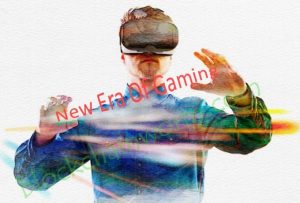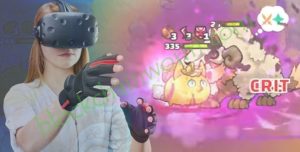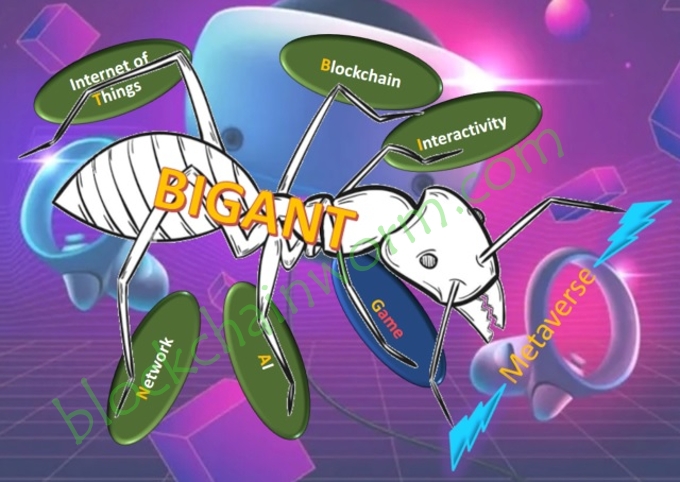Page Contents :
New Era Of Gaming
The Metaverse has long been a staple of science fiction, but now it’s slowly becoming a reality.
We have discussed Blockchain ![]() and Interactivity
and Interactivity ![]() in previous posts; now, we will be discussing Gaming technology.
in previous posts; now, we will be discussing Gaming technology.
Game engines, real-time rendering, and other technologies make up the basis of gaming technology.
Metaverse is a virtual world, and Gaming is one of its core technologies.
In this virtual world, players can take part in a variety of activities and even conduct business.
Gaming has played an important role in the contemporary world for many years, with millions of players on various platforms around the world.
The game will make a perfect partner for the metaverse based on its current development trend.
How we interact and experience virtual worlds will be completely transformed by the intersection of metaverse and gaming.
The immersive interactive environment that the metaverse may offer to players can improve their gaming experience.
Games in the metaverse have the potential for better graphics, immersion, and social interaction, which is one of their most exciting features.
As technology improves, we can expect games in the metaverse to become more realistic, with more detail and realism.
Additionally, players will be able to enter a wholly immersive virtual world thanks to games in the metaverse.
Which will be able to provide an immersive experience that is unmatched by traditional games.
Roblox ![]() , Minecraft
, Minecraft ![]() , and Decentraland
, and Decentraland ![]() are just a few examples of popular games using metaverse themes that are altering the way we think about gaming.
are just a few examples of popular games using metaverse themes that are altering the way we think about gaming.

The current state of development of these games enables us to understand the potential of the metaverse and how it can bring in a new era of gaming.
Driving Force of Gaming
Players can participate and interact with one another in a virtual world through games.

The metaverse will grow more dynamic and dynamic as more and more players engage in the game.
This creates a positive feedback loop that fosters the expansion and evolution of the metaverse.
Minecraft has been around since 2009 and is one of the most popular virtual games in the world.
Because it provided players with a platform to design and build their virtual worlds, the game was crucial to the growth of the virtual world.
Additionally, Second Life ![]() and Roblox were influenced by Minecraft to develop more immersive and interactive virtual environments.
and Roblox were influenced by Minecraft to develop more immersive and interactive virtual environments.
Another popular metaverse game is Decentraland, a virtual economy platform.
Through various activities, players can earn MANA cryptocurrency.
They can also build, purchase, and sell virtual land in the game.
The decentralized nature of the game gives it a perfect platform for user-created and monetized content.
It is clear that games have had an impact on the growth of the metaverse.
Networking, processing power, and graphics capabilities are being strained by the demands of modern gaming.
As new tools and technologies are continually developed by game developers, the metaverse is being built and expanded.
It encourages the continuous growth of the metaverse by providing players with more interactive and immersive experiences.
Players’s Experience
Games in the metaverse increase social interaction and offer a better player experience.
Games give players a way to interact and connect with people in a virtual environment, creating a sense of community and belonging.
Given that players can engage with others from all over the world in the metaverse, this sense of community is particularly crucial.
Games like Second Life and VRChat ![]() help players overcome language and cultural boundaries, allowing them to interact with other players in real time.
help players overcome language and cultural boundaries, allowing them to interact with other players in real time.
Additionally, games are encouraging metaverse creation and virtual environment exploration.
Players can design and customize their environments and avatars in many virtual environment games, giving them new and exciting opportunities to express themselves.
This creativity also extends to the game itself, which offers a range of different challenges and goals.
Which allows players to explore and experiment in ways that are not feasible in more traditional games.
For example, games with planets, galaxies, and other celestial objects like No Man’s Sky and Dangerous Elite.
Gives players access to a huge, open virtual environment that offers players endless possibilities for exploration and adventure.
This is a level that is simply not conceivable in traditional games, whether it is exploring virtual cities or delving into mysterious galaxies.
Examples include Minecraft, which offers a vast, open virtual world where players can shape new experiences whatever they wish.
And games like Roblox, which let players design their games and environments.
This is where players can showcase their creativity and design skills.
Thereby attracting a broad audience of players into the metaverse, expanding the overall player base, and fostering social connections.
Overall, playing games improves the player experience in the metaverse by giving them more opportunities to interact, create, and explore.
Players can explore and feel a sense of wonder that is not feasible in the real world.
And they can get a chance to experience things that they otherwise wouldn’t be able to.
Impact Of GameFi
While mentioning metaverse games. we will undoubtedly think about GameFi.
GemeFi, as a decentralized gaming platform, utilizes blockchain technology to offer gamers confidence, transparency, and security.
It combines Blockchain, Decentralised Finance (DeFi), and Gaming to make the metaverse as a whole easier to develop, expand, and monetize.

GemeFi integrates its Play-to-Earn (P2E) games and Electronic Sports (e-sports) features into well-known games through collaborations with game developers and pre-existing gaming platforms.
Incentivize players to actively engage in the virtual world and contribute to its overall ecosystem.
With P2E, players can take part in games and complete missions or challenges to win rewards, tokens, or other valuable items.
Through in-game purchases, several game companies offer game developers a consistent flow of income.
To improve their gaming experience, players can buy virtual items including clothing, accessories, and weapons.
These virtual items can be purchased with real money or in-game currency.
Companies like Decentraland and Somnium Space ![]() are selling virtual real estate to users interested in investing in the metaverse.
are selling virtual real estate to users interested in investing in the metaverse.
Users can purchase virtual land and build their environments by constructing virtual stores, homes, and other buildings.
Over time, the value of these digital properties will rise as well, helping to drive the ecological evolution of the metaverse.
The competitive environment offered by e-sports, on the other hand, allows players to compete against one another in a variety of gaming competitions or events, win rewards, and even make money.
Enterprises are beginning to recognize that the metaverse has the potential to be an exciting new medium for reaching consumers.
Enterprise can promote their products and services in a virtual environment by using in-game advertising or by supporting virtual events.
This approach can generate additional revenue for game developers, as well as provide some additional monetary benefits to players.
The metaverse has emerged as a brand-new market for business and enterprise, with a future full of potential and opportunity.
In addition to the monetization of virtual games, the intersection of metaverse games and the virtual economy also opens new opportunities for making a living.
We can look forward to how GameFi will influence the future and more innovations as the metaverse expands with the help of entrepreneurs and investors.
The Challenges And Prospects Of Game
While the intersection of the metaverse and gaming holds great potential, it also presents unique challenges.
One of the main challenges is technical constraints, such as the interoperability and scalability of gaming platforms
To allow for interoperability between various gaming systems, game developers must create standards and protocols.
Additionally, make sure that games are seamlessly integrated, allowing players to switch freely between virtual platforms.
For the size and complexity of the game, game developers must also offer high-performance computing power, storage, and bandwidth.
Unlock the potential of metaverse games by coming up with new solutions to these challenges.
In metaspace, excessive gaming may have a negative impact on social interactions, which is another potential challenge.
Players face the risk of being overly immersed in the virtual world and lacking social interaction in reality, which will cause them to become cut off from the real world.
Game designers must create interactive environments that motivate players to engage deeply in social interactions.
The intersection of gaming and the metaverse offers exciting opportunities for mutual benefit and has great promise for the development of gaming entertainment.
The game industry has always been a key factor in driving the growth and development of the metaverse, and this trend will only continue.
Pushing the boundaries of games requires creative, innovative, and forward-thinking game developers.
Increase the player base of the metaverse by attracting new players who may not have been previously interested in virtual worlds.
The future of metaverse gaming is promising, and we are looking forward to the day when it will be able to create whole new business models that were previously impractical.




